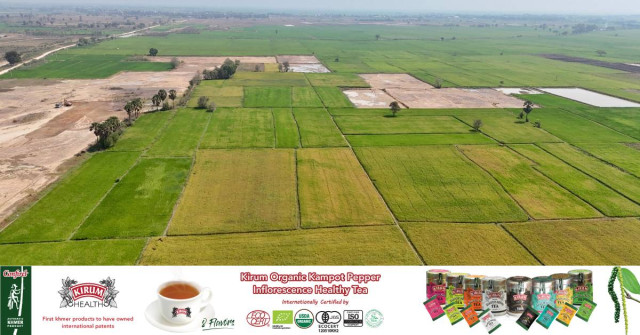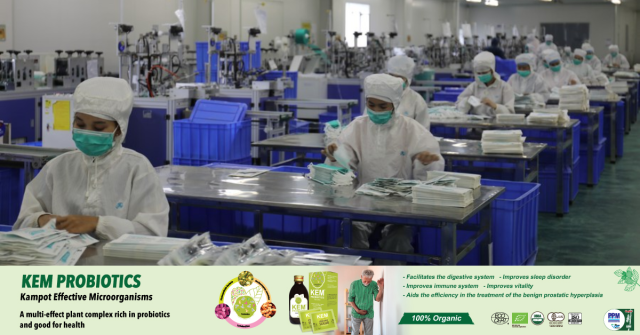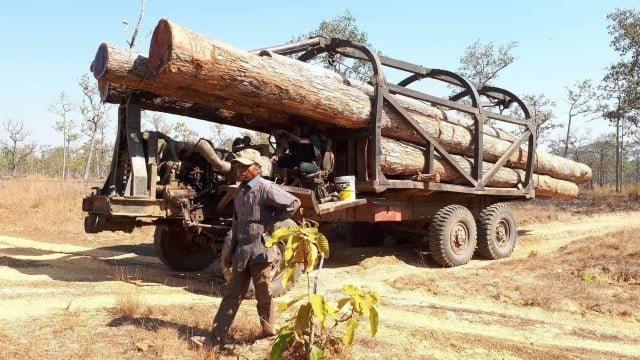Dry Season Rice Cultivation Leads to Water Shortage

- By Chhum Chantha
- February 6, 2024 7:10 PM
PHNOM PENH – Dry season rice cultivation has reached 760,000 hectares across the country, exceeding the Water Ministry limit by 260,000 hectares and causing water shortages in some provinces.
Chan Youttha, a spokesman for the Ministry of Water Resources and Meteorology said farmers are still growing rice in places where dry-season rice cultivation had been discouraged because water resources were believed not to be sufficient to meet the farmers’ needs.
The irrigation plan for dry season rice cultivation 2023-2024, which was issued by the Ministry of Water Resources and Meteorology, set an indicative limit of 500,000 hectares.
Youttha said rice cultivation in the dry season has significantly increased, reaching unprecedented levels.
“Last year, Cambodia cultivated 600,000 hectares of rice during the dry season. And in 1999-2000, before the establishment of the ministry, there were only 250,000 hectares of rice cultivation,” Yutha said.
Farmers in Battambang, Pursat, Prey Veng and Takeo provinces are growing more rice than the ministry's plan, leading to severe water shortages.
In Battambang province, the ministry anticipated that the water supply would only allow 20,000 hectares to be cultivated during the dry season, but farmers have planted rice on over 60,000 hectares. Several villages in Mong Russei district say they ran out of water for the rice.
In Takeo province, the current area for rice cultivation has increased by more than 100,000 hectares, while the initial plan was only 80,000 hectares.
But the ministry helped solve water supply issues and managed to save most of the farmers’ crops in the province, with only 400 hectares facing droughts, Youttha said.
In Pursat and Prey Veng provinces, 6,000 and 10,000 hectares of dry-season rice are facing water shortages.
“The ministry will put all of its efforts into pumping water from water resources and flowing it over farmer’s rice fields,” Youttha said, adding that droughts not only impact crops but also some villages, that ran out of water for their daily use.
Youttha said the temperature would rise steadily from February to early May. Between April to early May, temperatures would rise from 38 to 41 degrees Celsius on some days. As the temperature rises, the amount of rainfall will be less compared to 2023. Moreover, there will be more thunderstorms and winds as well.
Im Rachana, spokeswoman for the Ministry of Agriculture, Forestry and Fisheries has previously said the higher price of paddy rice is one of the main factors in motivating farmers to grow more rice in this dry season.
“Blames should not be put on the farmers in this case. When the price of paddy rice is higher, farmers would grow more to earn more profit. Once the rice cultivation exceeds the plan, water supply is affected,” Rachana said.
Rachana said the Ministry of Agriculture will continue to work closely with the provincial authorities, the Ministry of Water Resources, and all relevant institutions to solve this water shortage.
During a cabinet meeting on Feb. 2, Prime Minister Hun Manet called the Ministry of Agriculture, Forestry and Fisheries, the National Committee for Disaster Management and other relevant institutions to get ready to address the issue.
The PM advised all relevant officials to restore the irrigation system as far as possible.
Originally written in Khmer for ThmeyThmey, this story was translated by Rin Ousa for Cambodianess.















